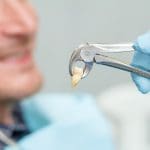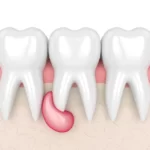Hemophilia is a rare genetic disorder that affects the body’s ability to form blood clots, leading to prolonged bleeding. It is crucial for individuals with hemophilia to be aware of how this condition can impact their dental health and dental care. In this comprehensive guide, we will explore hemophilia in detail, its implications for dental health, and how dentists can provide safe and effective care to patients with hemophilia.
Understanding Hemophilia
Hemophilia is a hereditary blood disorder that primarily affects males, although it can occasionally occur in females. It is characterized by a deficiency or dysfunction of clotting factors, specifically factors VIII and IX. These factors play a vital role in the coagulation process, which is necessary to stop bleeding after an injury. There are three main types of hemophilia:
- Hemophilia A (Factor VIII Deficiency)
- Hemophilia B (Factor IX Deficiency)
- Hemophilia C (Factor XI Deficiency)
Hemophilia A (Factor VIII Deficiency)
This is the most common type of hemophilia, accounting for about 80-85% of all cases. It is caused by a deficiency of clotting factor VIII.
Hemophilia B (Factor IX Deficiency)
Hemophilia B is less common and results from a deficiency of clotting factor IX. It is sometimes referred to as “Christmas disease.”
Hemophilia C (Factor XI Deficiency)
Hemophilia C is relatively rare, and it is characterized by a deficiency of clotting factor XI.
The severity of hemophilia can vary widely from person to person. Some individuals may have mild hemophilia, while others may have moderate or severe forms of the disorder. The severity is determined by the level of clotting factor present in the blood.
Dental Implications of Hemophilia
Hemophilia can pose unique challenges in dental care. It’s essential for both patients and dentists to understand these implications to ensure the safety and well-being of individuals with hemophilia.
- Risk of Bleeding
- Gum Bleeding
- Delayed Wound Healing
- Spontaneous Joint Bleeding
- Anesthesia Considerations
Risk of Bleeding
Individuals with hemophilia are at a heightened risk of bleeding, even from minor injuries or dental procedures. Inadequate clotting factor levels can result in prolonged and uncontrolled bleeding, which can be life-threatening.
Gum Bleeding
Those with hemophilia often experience gum bleeding, especially if they have gum disease (gingivitis or periodontitis). Routine dental care, such as brushing and flossing, may lead to bleeding in the oral cavity.
Delayed Wound Healing
Wound healing after dental procedures can be slower in patients with hemophilia, as the body has difficulty forming blood clots. This prolongs the recovery process and may increase the risk of infection.
Spontaneous Joint Bleeding
Hemophilia can lead to spontaneous joint bleeding, which can be triggered by even minimal trauma. In some cases, dental procedures may cause joint bleeding, primarily if they involve forceful manipulation of the jaw or surrounding tissues.
Anesthesia Considerations
Dentists must be cautious when administering local anesthesia to individuals with hemophilia, as injecting a needle into oral tissues can result in bleeding at the injection site.
Dental Care for Patients with Hemophilia
Patients with hemophilia require specialized dental care to minimize the risk of bleeding and ensure their oral health. Dentists play a critical role in providing safe and effective treatment for these individuals. Here are some essential considerations when treating patients with hemophilia:
- Comprehensive Assessment
- Collaboration with Hematologists
- Preoperative and Postoperative Care
- Minimally Invasive Dentistry
- Hemostatic Agents
- Elective Procedures
- Education and Prevention
- Emergency Protocol
Comprehensive Assessment
Dentists should conduct a thorough assessment of the patient’s oral health, including evaluating the presence of gum disease, cavities, and other oral conditions.
Collaboration with Hematologists
Close communication with the patient’s hematologist or treating physician is essential. Dentists should be aware of the patient’s clotting factor levels and any recommended treatments, such as prophylactic clotting factor infusions.
Preoperative and Postoperative Care
Patients with hemophilia may require clotting factor infusions before and after dental procedures. Dentists should coordinate these infusions with the patient’s hematologist.
Minimally Invasive Dentistry
Whenever possible, dentists should opt for minimally invasive procedures to reduce the risk of bleeding. For example, in cases of tooth extraction, conservative approaches may be preferred.
Hemostatic Agents
Dentists may use topical hemostatic agents, such as absorbable gelatin sponges or oxidized cellulose, to control bleeding during dental procedures.
Elective Procedures
Elective cosmetic procedures, like teeth whitening or veneers, should be approached with caution, and the potential risks should be thoroughly discussed with the patient.
Education and Prevention
Dentists should educate patients with hemophilia about oral hygiene practices and the importance of avoiding trauma to the mouth. Patients should also be aware of the signs of gum bleeding or oral bleeding and know when to seek immediate medical attention.
Emergency Protocol
Dentists and their staff should be trained in managing dental emergencies in patients with hemophilia. This includes knowing how to control bleeding, administer clotting factor infusions, and seek urgent medical care.
Conclusion
Hemophilia is a complex medical condition that requires careful consideration when providing dental care. The key to ensuring the oral health and overall well-being of individuals with hemophilia lies in effective communication, collaboration between dental professionals and hematologists, and specialized dental care techniques that prioritize patient safety.
It is essential for individuals with hemophilia to be proactive about their oral health, maintain regular dental check-ups, and communicate their condition to their dentists. Dentists, in turn, should be well-informed about the specific needs and risks associated with hemophilia and implement appropriate strategies to provide high-quality dental care while minimizing the risk of bleeding.
By working together, patients, dentists, and hematologists can ensure that individuals with hemophilia receive the dental care they need, promoting oral health and quality of life in a safe and effective manner.





